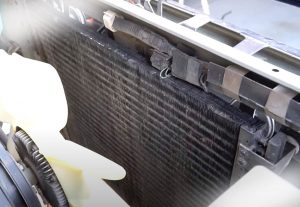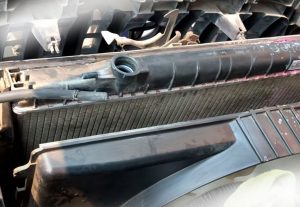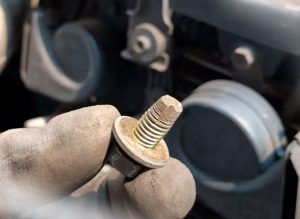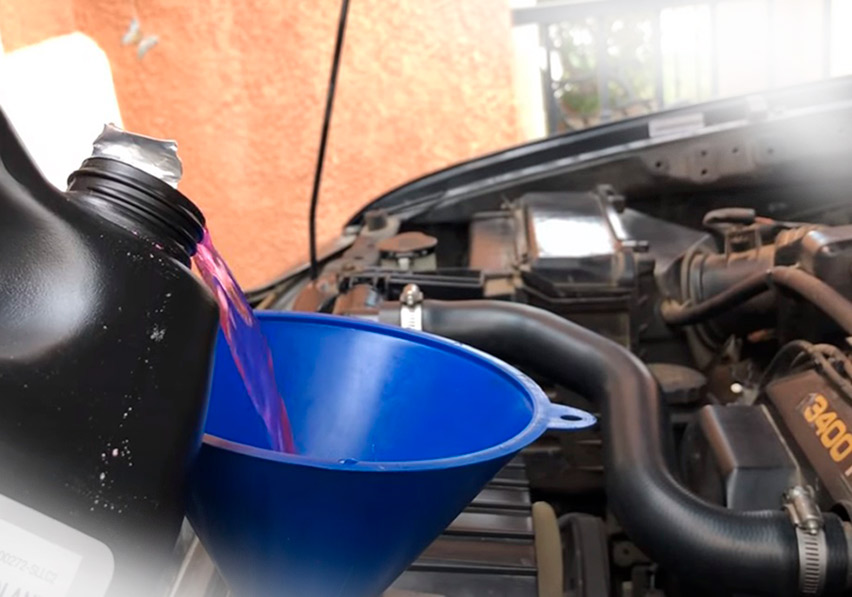What Is It?
For a car engine to function normally, it needs to work at a certain temperature – from 115 to 135 degrees. The radiator is a metal component and acts as a heat exchanger to cool the fluid circulating in water-cooled vehicles.
The fluid passing through the internal lines of the engine absorbs the heat generated by the combustion of the fuel. When the radiator is reached, the temperature is reduced by the fan and outside air that enters the vehicle. After the cooling process, the material is returned and this process takes place again.
The fluid circulating in the engine is a mixture of water and a special additive, it must raise the temperature so that the fluid begins to boil. Without this combination, this would have happened at 100 degrees, well below the desired range for the car.
Radiators Have Several Functions:
- Removal of heat from the medium flowing inside the radiator (liquid or gas) and release it into the atmosphere;
- In the radiators of the engine cooling system – the possibility of adding and draining liquid into the system (due to the presence of filler plug and drain valve);
- Also, in radiators of internal combustion engine cooling system – equalization of pressure in the system and in the atmosphere, as well as relief of excessive pressure through the built-in valve;
- In air conditioning system radiators – expansion of the working medium (freon) and lowering of its temperature;
- In the radiators of heaters – heat removal from the coolant to the car interior.
Any radiator provides heat exchange between different media (liquids, liquid, and air, gases), due to which the cooling of some media and heating of others is achieved. All radiators are important for the proper functioning of the individual vehicle systems, in some cases, the radiator basically makes it possible to operate the vehicle. Therefore, a faulty heat exchanger should be repaired or replaced, but before you go to the store for a new part, it is necessary to understand the types, design, and features of automotive radiators.
Questions of Correct Selection, Repair, And Replacement of Car Radiators
- 1. Radiators are critical for the operation of many vehicle systems, especially for the functioning of the power unit, heater, some types of transmissions, hydraulic system, and others. If a radiator malfunctions, the temperature of the fluid rises and the unit (or the entire system) may fail due to overheating. Therefore, the heat exchanger must be replaced when problems occur.
- 2. The replacement should take the same type and model radiator that was previously installed, if you cannot find the same device, you should use a radiator of sufficient capacity. If you take too small a radiator, the system will not work efficiently, and the large may not fit into place.
- 3. The radiator should be replaced according to the vehicle’s repair manual. The heat exchanger should then be checked regularly, cleaned of dirt on the outside, and scale and deposits on the inside. With the right radiator and regular maintenance, the cooling system will work efficiently in all conditions.
How to Replace A Radiator in A Toyota Tacoma?
It is essential to keep the radiator in your Toyota Tacoma in good condition as a leaky radiator can cause overheating and engine damage.
- 1. Locate the plug at the bottom of the radiator and make it weaker. Then it is tedious to drain the engine coolant into a sealable container.
- 2. It is necessary to remove the radiator grille and disconnect the upper radiator hose, the radiator reservoir hose and the lower radiator hose.
- 3. Carefully inspect the radiator hoses and replace worn-out and unusable hoses.
- 4. Disconnect the fan shroud and oil cooler hoses and remove the bolts holding the radiator. Install a new radiator and tighten the bolts to specifications.
- 5. Reconnect the oil cooler hoses and fan shroud and replace the lower radiator hose, radiator reservoir hose and upper radiator hose.
- 6. Fill the reservoir with a mixture of semi-distilled water and engine coolant and close the radiator cap very loosely.
- 7. Start the engine and let it warm up, then turn it off and check the coolant level. If necessary, add coolant and close the radiator cap tightly. Wear protective clothing, gloves, and eyewear when replacing your Toyota Tacoma Radiator.
That’s It!
In the process of driving a car, the engine heats up all the time, which accordingly leads to its ineffective operation, rapid wear of any machine. To reduce heating, a constant engine cooling system is required. The radiator plays an essential role in this process. Thanks to the radiator, there is no overheating, the right temperature is always in the mechanism. Cooling radiators for cars are important parts on which the smooth operation of the engine largely depends. Choose the right manufacturer’s suggestions to always choose the option that will make your machine more durable.






Add Comment